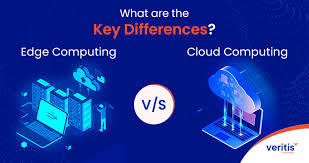
As businesses and technologies become more connected and data-driven, two computing paradigms dominate the conversation: Cloud Computing and Edge Computing. Both offer powerful ways to process and manage data, but they serve different needs and use cases.
By 2025, understanding the differences and advantages of cloud and edge computing is essential for companies, developers, and tech enthusiasts aiming to optimize performance, cost, and security.
Let’s explore what sets these technologies apart and how to decide which is right for your needs.
1. What Is Cloud Computing?
Cloud computing refers to delivering computing services—like servers, storage, databases, networking, software, and analytics—over the internet (“the cloud”).
Key features include:
- Centralized data centers managed by providers like Amazon Web Services (AWS), Microsoft Azure, and Google Cloud.
- Scalability to handle large volumes of data and users.
- Accessibility from anywhere with an internet connection.
- Pay-as-you-go pricing models.
Cloud computing is ideal for data storage, large-scale processing, and running complex applications remotely.
2. What Is Edge Computing?
Edge computing brings computation and data storage closer to the location where it is needed, such as near sensors, devices, or local networks.
This approach:
- Reduces latency by processing data locally instead of sending it back to distant cloud servers.
- Saves bandwidth by filtering and analyzing data at the source.
- Enhances privacy and security by limiting data transmission.
- Enables real-time decision-making in applications like autonomous vehicles or industrial IoT.
Edge computing is essential where speed, reliability, and data sovereignty are critical.
3. Key Differences Between Cloud and Edge Computing
| Feature | Cloud Computing | Edge Computing |
|---|---|---|
| Location of Processing | Centralized in remote data centers | Distributed near data sources/devices |
| Latency | Higher latency due to data travel | Low latency, near real-time responses |
| Bandwidth Usage | High, as all data is transmitted to cloud | Reduced, with local data filtering |
| Scalability | Virtually unlimited | Limited by local hardware |
| Use Cases | Data analytics, backups, web hosting | IoT devices, autonomous cars, AR/VR |
4. When to Use Cloud Computing
Cloud computing is well-suited for:
- Hosting websites and applications.
- Data backup and disaster recovery.
- Big data analytics and AI model training.
- Collaboration platforms and remote work tools.
Its centralized nature offers flexibility, cost-efficiency, and powerful computing resources.
5. When to Use Edge Computing
Edge computing shines in scenarios requiring:
- Real-time data processing and low latency (e.g., autonomous vehicles, smart factories).
- Bandwidth conservation in remote or network-constrained environments.
- Privacy-sensitive applications where data cannot leave the local site.
- Support for massive IoT deployments generating huge volumes of data.
Edge complements the cloud by handling local tasks before sending relevant data for centralized processing.
6. The Future: Cloud and Edge Working Together
Rather than being mutually exclusive, cloud and edge computing are increasingly integrated into hybrid architectures:
- Edge devices perform immediate data processing.
- The cloud handles complex analytics, storage, and management.
- This synergy enables smarter, faster, and more efficient systems.
Enterprises adopting a cloud-edge continuum gain flexibility and optimized performance.
Final Thoughts
Both cloud and edge computing offer unique strengths. Choosing between them depends on factors like latency requirements, bandwidth, security, and scalability.
In 2025, successful digital strategies combine cloud’s power with edge’s immediacy—unlocking new possibilities in IoT, AI, and real-time applications.
Understanding these paradigms will help businesses and developers build smarter, faster, and more resilient systems for the connected world.
